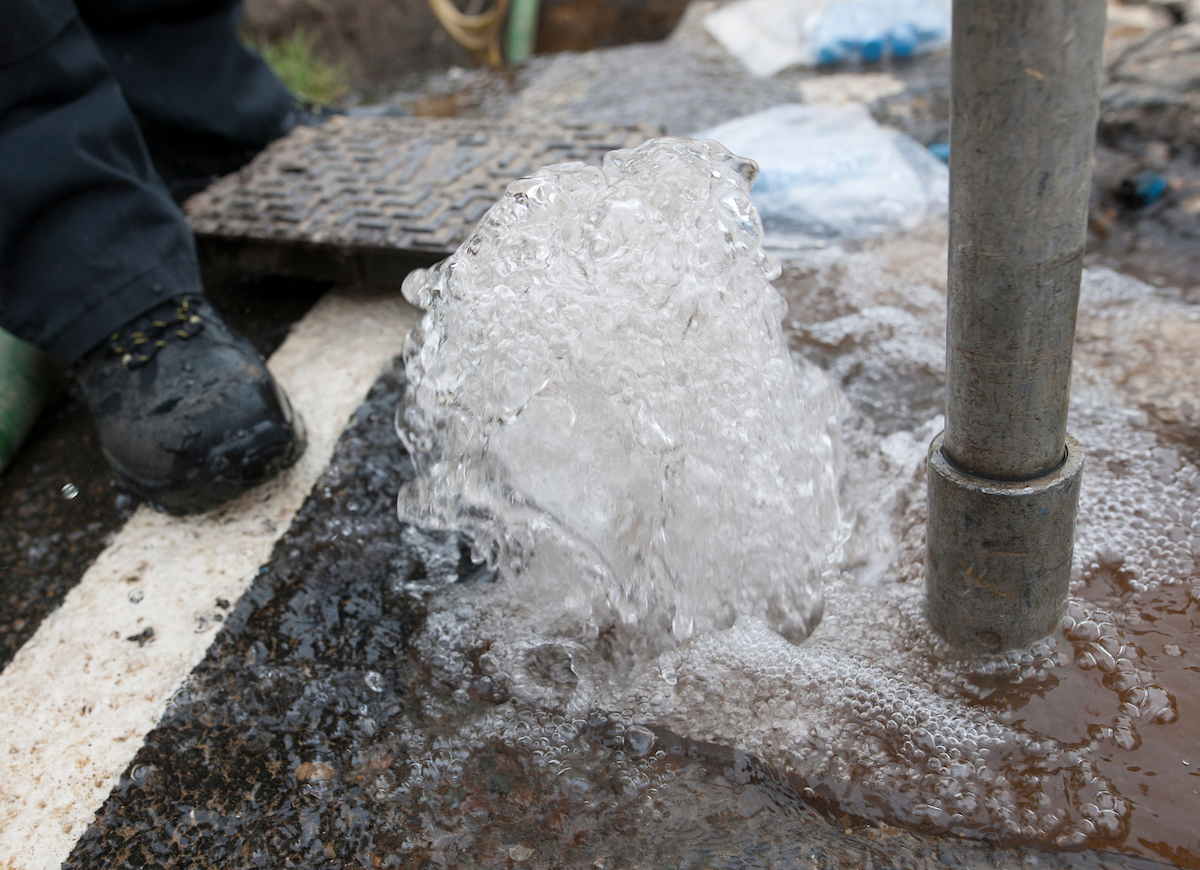Access to clean and safe water is essential for a healthy life. For millions of people worldwide, well water serves as a primary source of drinking water. It is estimated that billions of people worldwide rely on groundwater, which includes well water, as a primary source of drinking water and for other household needs. Many rural communities, especially in developing countries, heavily depend on wells for their water supply due to limited access to centralized water infrastructure.
In Africa, Asia, and parts of Latin America, well water remains a critical source of potable water for millions of people. Additionally, in some developed countries, private wells are common in rural areas and serve as the primary source of water for individual households. Approximately 43 million individuals, constituting around 15 percent of the United States population, depend on domestic (private) wells for their drinking water supply.
However, well water can sometimes contain impurities that may pose health risks or affect its taste and odor. Notably, the quality and safety of water obtained from these domestic wells are not subject to regulation by the Federal Safe Drinking Water Act or, in most instances, by state laws. As an alternative, the responsibility for maintaining these domestic well systems and monitoring water quality lies with individual homeowners.
To ensure your well water is safe for consumption and other household uses, proper treatment is necessary. In this comprehensive guide, we will explore various methods for treating well water, ensuring it meets the highest standards of quality.
Understanding Well Water Contaminants
Before delving into the treatment methods, it’s crucial to recognize common contaminants that may be present in well water. These contaminants can include bacteria, viruses, heavy metals, nitrates, pesticides, and other chemical pollutants. The presence of these impurities can be influenced by factors such as the geological composition of the ground and proximity to potential sources of contamination like agriculture or industrial areas.
Conducting a Water Test
The first step in treating well water is to conduct a comprehensive water test. Testing your well water will identify the specific contaminants present and their concentration levels. You can hire a professional water testing service or purchase a water testing kit designed for home use. The results will guide you in selecting the appropriate treatment methods.
Filtration Systems
- Sediment Filters: Sediment filters are the first line of defense against larger particles and debris. These filters remove sediments, sand, and rust, preventing them from reaching other treatment stages.
- Activated Carbon Filters: These filters are highly effective at removing organic compounds, chlorine, and unpleasant tastes and odors. They can significantly enhance the taste and smell of well water.
- Reverse Osmosis: Reverse osmosis is a powerful water filtration method that can eliminate a wide range of contaminants, including heavy metals, nitrates, and bacteria. It forces water through a semipermeable membrane, leaving impurities behind.
Water Disinfection
- Chlorination: Chlorination is a common method of disinfecting well water. It involves adding chlorine to the water to kill harmful microorganisms like bacteria and viruses. However, be cautious with chlorine as it can react with certain organic compounds and form harmful byproducts.
- UV Disinfection: Ultraviolet (UV) disinfection is a chemical-free method that uses UV light to neutralize pathogens in the water. It is effective against bacteria, viruses, and protozoa.
- Ozone Treatment: Ozone treatment involves injecting ozone into the water to destroy bacteria, viruses, and organic contaminants. It leaves no chemical residues and effectively disinfects the water.
Water Softening
If your well water is hard due to high levels of calcium and magnesium, water softening is necessary. Hard water can lead to scaling in pipes and appliances, reducing their efficiency and lifespan. Water softeners use ion exchange to replace calcium and magnesium ions with sodium or potassium ions, resulting in softened water.
Removing Specific Contaminants
- Iron and Manganese: Iron and manganese can cause staining and an unpleasant taste in well water. Specialized filters or oxidation systems can effectively remove these minerals.
- Nitrates: High nitrate levels in well water can be harmful, especially for infants. Ion exchange, reverse osmosis, or distillation methods can remove nitrates effectively.
- Arsenic: Arsenic is a toxic substance that can occur naturally in some groundwater sources. Various treatment methods like coagulation, filtration, and ion exchange can help remove arsenic.
Maintenance and Monitoring
Proper maintenance of your well and treatment systems is crucial to ensure their efficiency and longevity. Regularly replace filters, clean components, and follow the manufacturer’s guidelines for maintenance. Additionally, conduct periodic water tests to monitor the quality of your well water and to detect any changes or new contaminants.
Benefits Of Treating Well Water
Treating well water offers numerous benefits that contribute to improved health, enhanced taste, and prolonged lifespan of household appliances. Here are some of the key advantages of treating well water:
- Ensures Safe Drinking Water: Treating well water helps eliminate or reduce harmful contaminants such as bacteria, viruses, pesticides, heavy metals, and other pollutants. This process ensures that the water is safe for consumption and reduces the risk of waterborne illnesses.
- Improves Water Taste and Odor: Well water can sometimes have a distinct taste and odor due to natural minerals or organic compounds. Treatment methods like activated carbon filters or reverse osmosis can significantly improve the taste and remove unpleasant odors, making the water more enjoyable to drink.
- Protects Household Appliances: Unfiltered well water can contain sediments and minerals that can lead to scaling and clogging in household appliances such as water heaters, dishwashers, and washing machines. Treating well water reduces these issues, extending the lifespan and efficiency of appliances.
- Reduces Staining and Discoloration: High levels of iron, manganese, and other minerals in well water can cause staining on fixtures, sinks, and laundry. Proper treatment mitigates these issues, preserving the aesthetic appeal of your home.
- Lowers Health Risks: Well water might contain contaminants like nitrates and arsenic, which can be harmful, especially for vulnerable groups such as pregnant women and infants. Treating well water effectively removes or reduces these health hazards.
- Minimizes Plumbing Maintenance: Sediments and mineral deposits in untreated well water can lead to clogged pipes and reduced water flow. Treating the water helps minimize plumbing maintenance and repair costs.
- Environmentally Friendly: Some treatment methods, such as UV disinfection and ozone treatment, are environmentally friendly since they do not involve the use of chemicals. These methods provide effective water purification without producing harmful byproducts.
- Customizable Solutions: Treating well water allows homeowners to tailor the treatment process according to the specific contaminants found in their water test results. This customization ensures the most efficient and cost-effective treatment for their needs.
- Reliable Water Supply: Dependence on well water means having a self-sufficient water source, particularly useful during droughts or when centralized water supplies are compromised. Proper treatment ensures a reliable and consistent water supply.
- Increases Property Value: Having a well with well-treated water can increase the overall value of a property, as potential buyers recognize the benefits of a private, clean water source.
Conclusion
Treating well water is a vital responsibility to ensure safe and clean drinking water for you and your family. The methods discussed in this comprehensive guide can help address a variety of water quality issues. Remember to conduct water tests, identify contaminants, and select the appropriate treatment methods based on the results. With regular maintenance and monitoring, you can enjoy the benefits of pure and refreshing well water, free from harmful impurities.






